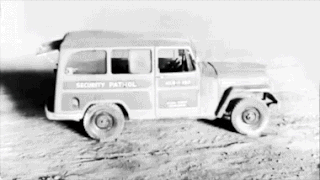
The effects of a nuclear explosion on its immediate vicinity are typically much more destructive and multifaceted than those caused by conventional explosives. In most cases, the energy released from a nuclear weapon detonated within the lower atmosphere can be approximately divided into four basic categories:
Operation Latchkey was a series of 38 nuclear tests conducted by the United States in 1966–1967 at the Nevada Test Site. These tests followed the Operation Flintlock series and preceded the Operation Crosstie series.

Operation Crosstie was a series of 48 nuclear tests conducted by the United States in 1967–1968 at the Nevada Test Site. These tests followed the Operation Latchkey series and preceded the Operation Bowline series.
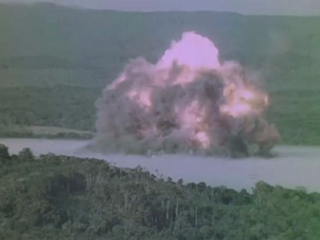
Operation Blowdown was an explosives test carried out in the Kutini-Payamu jungle of Australia's Cape York Peninsula in 1963, to simulate the effects of a nuclear weapon on tropical rainforest. It was conducted by the Australian Army, the Department of Supply, and the Defence Standards Laboratory with participation from the United Kingdom, Canada and United States. In addition, blast effects on military material, field fortifications, supply points, and foot and vehicle movement were examined in a rainforest environment.
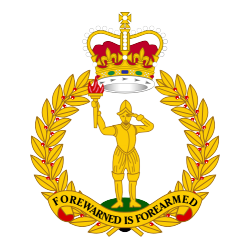
The Royal Observer Corps (ROC) was a civil defence organisation intended for the visual detection, identification, tracking and reporting of aircraft over Great Britain. It operated in the United Kingdom between 29 October 1925 and 31 December 1995, when the Corps' civilian volunteers were stood down. Composed mainly of civilian spare-time volunteers, ROC personnel wore a Royal Air Force (RAF) style uniform and latterly came under the administrative control of RAF Strike Command and the operational control of the Home Office. Civilian volunteers were trained and administered by a small cadre of professional full-time officers under the command of the Commandant Royal Observer Corps; latterly a serving RAF Air Commodore.

The United Kingdom Warning and Monitoring Organisation (UKWMO) was a British civilian organisation operating to provide UK military and civilian authorities with data on nuclear explosions and forecasts of fallout across the country in the event of nuclear war.

Operation Sailor Hat was a series of explosives effects tests, conducted by the United States Navy Bureau of Ships under the sponsorship of the Defense Atomic Support Agency. The tests consisted of two underwater explosions at San Clemente Island, California in 1964 and three surface explosions at Kahoʻolawe, Hawaii in 1965. They were non-nuclear tests employing large quantities of conventional explosives to determine the effects of a nuclear weapon blast on naval vessels, and the first major test of this kind since Operation Crossroads in July 1946.
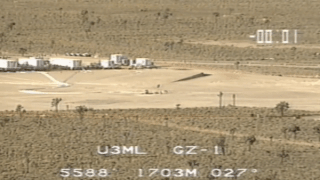
Operation Julin was a group of 7 nuclear tests conducted by the United States in 1991–1992. These tests followed the Operation Sculpin series, and were the last before negotiations began for the Comprehensive Test Ban Treaty.
A Tocsin is an alarm or other signal sounded by a bell or bells. It may refer to:
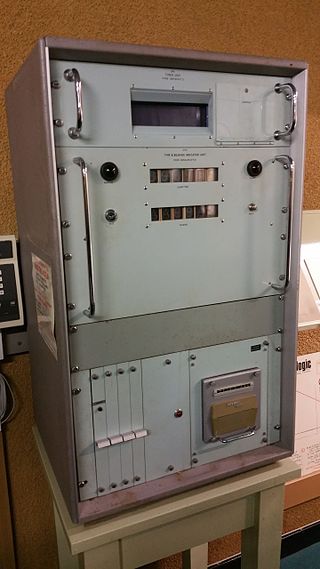
Atomic Weapons Detection Recognition and Estimation of Yield known by the acronym AWDREY was a desk-mounted automatic detection instrument, located at 12 of the 25 Royal Observer Corps (ROC) controls, across the United Kingdom, during the Cold War. The instruments would have detected any nuclear explosions and indicated the estimated size in megatons.

The Ground Zero Indicator, known by the acronym GZI was a specially designed shadowgraph instrument used by the British Royal Observer Corps during the Cold War to locate the Ground Zero of any nuclear explosion. It consisted of four horizontally mounted cardinal compass point pinhole cameras within a metal drum. Flash from a nuclear explosion would produce a mark on one or multiple of the papers within the drum and its position of the mark has enabled the bearing and height of the burst to be estimated in terms of engineering. With a triangulation between both neighbouring posts these type of readings would give an considered accurate height and position, which is identified by assessing the height of the explosion imprint above the horizon level that had been pre-exposed onto the paper.
The Fixed Survey Meter was a specialist detection instrument used by the Royal Observer Corps during the Cold War between 1958 and 1982 to detect ionising radiation from nuclear fallout generated by a ground burst.

The Royal Observer Corps (ROC) was a civil defence organisation operating in the United Kingdom between October 1925 and 31 December 1995, when the Corps' civilian volunteers were stood down.. Composed mainly of civilian spare-time volunteers, ROC personnel wore a Royal Air Force (RAF) style uniform and latterly came under the administrative control of RAF Strike Command and the operational control of the Home Office. Civilian volunteers were trained and administered by a small cadre of professional full-time officers under the command of the Commandant Royal Observer Corps; a serving RAF Air Commodore.

Royal Observer Corps monitoring posts are underground structures all over the United Kingdom, constructed as a result of the Royal Observer Corps' nuclear reporting role and operated by volunteers during the Cold War between 1955 and 1991.

Operation Snowball was a conventional explosive test to obtain information on nuclear weapon detonations run by the Defence Research Board with participation from the United Kingdom and United States. A detonation of 500 short tons (450 t) of TNT was used to study the resulting phenomena. The test was held at the Suffield Experimental Station in Alberta and was the largest ever man-made, non-accidental explosion in Canada. The test was also the first of its kind using a stacked TNT block hemisphere of such magnitude, a method repeated in six subsequent tests such as Operation Sailor Hat and Prairie Flat. The test allowed verifying predicted properties of shock and blast and determining its effect on a variety of military targets at varied distances from ground zero.












